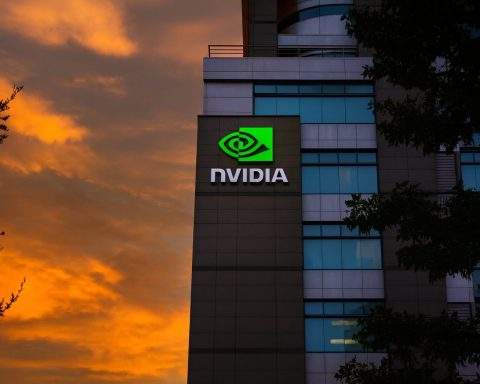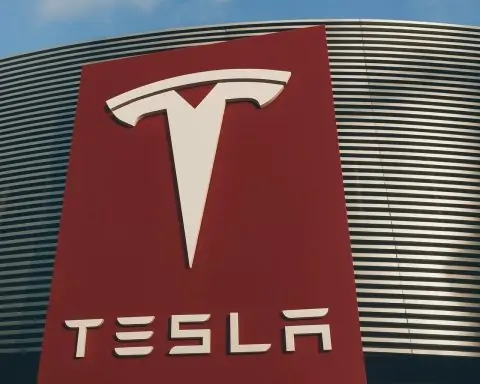- Historic Hoosier donut chain enters Chapter 11: Jack’s Donuts of Indiana Commissary, LLC – part of the 64-year-old Jack’s Donuts brand – filed for Chapter 11 bankruptcy on October 29, 2025, seeking to reorganize its finances under court supervision rather than shut down [1] [2]. The filing in U.S. Bankruptcy Court (Southern District of Indiana) allows the company to keep operating while it restructures debt.
- Franchise shops remain open: Jack’s Donuts emphasized that all franchised donut shop locations are continuing business as usual despite the corporate bankruptcy. In a public statement, the company assured customers, “Our stores remain open… no independently owned franchisee is subject to this action,” underscoring that the Chapter 11 proceeding affects the franchisor entity only [3]. Individual franchise owners echoed that “Our franchises are alive and well, continuing to grow,” distancing their local shops from the troubled commissary operation [4].
- Debts dwarf assets: Court documents reveal Jack’s Donuts of Indiana Commissary has over 100 creditors, $14.2 million in liabilities, and only about $1.4 million in assets [5]. The debts include a $3.5 million judgment to Old National Bank and large unpaid bills like $769,000 owed to a trucking company for donut deliveries [6]. This imbalance between liabilities and assets put significant financial strain on the company.
- Rapid expansion missteps: The financial trouble follows an aggressive expansion move – in late 2023, Jack’s Donuts opened a centralized production commissary in New Castle, Indiana, to supply its stores [7]. Some franchisees say this project “was a bigger project than [the CEO] thought” and was plagued by quality issues and higher costs [8] [9]. Several franchise owners who tried using the commissary’s pre-made donuts reported subpar products and lost sales, with at least one estimating a 25% sales drop at his shop until he reverted to making donuts in-house [10] [11].
- Legal troubles and investor concerns: The company’s CEO, Lee Marcum, has faced legal scrutiny. In May 2025, Indiana’s Securities Commissioner issued a cease-and-desist order alleging Marcum and his businesses illegally offered unregistered investment securities to raise funds [12] [13]. An Indiana University finance professor called it “very uncommon” for a company to attempt selling unregistered securities – a red flag highlighting the firm’s cash crunch [14]. Marcum’s other affiliated companies (Marcum Industries LLC and KCL Group Inc.) also filed Chapter 11 on the same day as Jack’s Donuts, hinting at broader financial distress across his ventures [15].
- Outlook for the donut chain: Jack’s Donuts hopes to restructure and survive. Executives insist the bankruptcy will stabilize operations for long-term growth [16], and experts note that Chapter 11 can give a viable business a “fresh start” by reorganizing debt and even changing ownership structures [17]. Franchisees are watching closely but take heart that in past restaurant bankruptcies (e.g. Bennigan’s in 2008), independent franchise stores often continued operating successfully even if the corporate parent failed [18]. Industry-wide, donut sellers face headwinds in 2025 – even giant Krispy Kreme saw its stock plunge from over $12 to about $3.70 per share in the past year amid sliding U.S. sales [19] [20]. Still, demand for sweet treats persists, and Jack’s Donuts’ management and loyalists are cautiously optimistic that with reorganization and a recommitment to quality, this beloved Indiana brand can emerge from bankruptcy and keep its 60+ year donut legacy alive.
Chapter 11 Filing and What It Means
Jack’s Donuts – an Indiana-based donut chain founded in 1961 – stunned local fans and franchisees by filing for Chapter 11 bankruptcy protection in late October 2025 [21]. Chapter 11 is a form of bankruptcy that allows a business to reorganize its finances under court supervision rather than liquidate entirely [22]. In practical terms, this means Jack’s Donuts is not closing its doors. The company will continue operating while it restructures debt and crafts a turnaround plan under oversight of the bankruptcy court.
According to federal court records, Jack’s Donuts of Indiana Commissary, LLC filed on October 29, 2025 in the Southern District of Indiana [23]. The case has been assigned to Judge Jeffrey J. Graham, and an initial meeting of creditors is scheduled for December 2, 2025 [24]. Chapter 11 status “Active, voluntary petition” indicates the filing was initiated by the company itself, not forced by creditors [25]. The company must submit detailed financial statements and a plan of reorganization for creditor approval in the coming weeks [26].
Crucially, Chapter 11 gives Jack’s Donuts breathing room to renegotiate obligations while keeping its stores open. Business law experts note that a Chapter 11 reorganization often involves restructuring debt payments and possibly bringing in new investment, while existing owners may cede some control. “Typically, there will be an effort to make the business more effective… reorganization [is mostly] a reorganization of ownership and debt,” explained Nicholas Georgakopoulos, a professor at IU’s McKinney School of Law [27]. In other words, the chain could emerge from bankruptcy with a new capital structure – for example, converting some debt to equity or selling stakes to fresh investors – but ideally with its donut shops still operating and serving customers.
For customers of Jack’s Donuts, the immediate impact is minimal. All retail locations remain open on normal schedules, and the familiar array of coffee and handcrafted donuts is still being served daily. The company was quick to reassure the public that the Chapter 11 filing “does not mean the business is closing” [28]. Jack’s Donuts stated via social media that its stores and teams are still “at work” and that its “commitment to quality, tradition, and community remains unchanged” during the reorganization [29]. In fact, many donut lovers in Indiana might not notice any difference at their local Jack’s – the bankruptcy primarily affects the corporate backend (the commissary and corporate finances), not the day-to-day operations of franchise-run donut shops.
Franchise owners have also been proactive in spreading the message that Jack’s Donuts shops are open and doing fine. Donna and Paul Ganote, who own six Jack’s Donuts locations around Indiana, posted emphatically on Facebook that their stores “have never been a part of the commissary… Our franchises are alive and well, continuing to grow” [30]. They reassured customers that their donuts are made in-house daily as usual [31]. This public communication aimed to prevent confusion: because the bankruptcy involves the “Jack’s Donuts of Indiana Commissary” entity, not the individual franchise LLCs, the franchised storefronts are not included in the court proceedings [32]. It’s a critical distinction that both the company and its franchisees are highlighting to maintain customer confidence.
By the Numbers: Liabilities, Assets, and Creditors
The bankruptcy filings provide a stark picture of why Jack’s Donuts had to seek protection. Simply put, the company’s debts massively outweigh its assets. Court documents show Jack’s Donuts of Indiana Commissary LLC declaring total assets between $1 million and $10 million, versus liabilities between $10 million and $50 million [33]. More specifically, an Indianapolis Business Journal analysis reports about $1.43 million in assets against $14.19 million in liabilities [34]. That means the company owes roughly ten times more than it owns – a clearly unsustainable financial position.
Who is owed all this money? The filing listed over 100 creditors ranging from banks to suppliers and business partners [35]. Notably, Old National Bank has a $3.5 million judgment against Jack’s Donuts [36], presumably related to loans or a line of credit that went unpaid. Large operational vendors are also among the creditors: for example, Carter Logistics, a trucking firm that handled donut distribution, is owed about $769,000 in unpaid invoices [37]. (Carter Logistics had even sued Jack’s Donuts alleging it wasn’t paid for delivery services [38].) These big debts suggest that Jack’s Donuts’ expansion and operations in recent years were propped up by significant borrowing and deferred bills.
Additionally, a former franchisee is listed as a creditor with a $40,000 claim [39], indicating there may have been disputes or obligations to franchise operators that corporate couldn’t fulfill. The broad mix of 100+ creditors implies that many parties – from ingredient suppliers to equipment lessors and contractors – were left holding IOUs as Jack’s Donuts’ finances deteriorated.
The imbalance between assets and liabilities raised alarms that without intervention, the company could face liquidation (Chapter 7 bankruptcy). Under Chapter 11, however, Jack’s Donuts will attempt to propose a plan to appease these creditors. Often this means creditors may agree to settle for partial repayment or reorganized payment schedules, betting that they’ll recoup more in the long run if the business survives. In the interim, the court can approve “debtor-in-possession” financing or usage of cash collateral so the company can pay for ongoing needs (like payroll and ingredient supplies) to keep the donut shops running during the bankruptcy process [40]. Indeed, Jack’s Donuts has petitioned to cover key operating expenses while it restructures, as is common in Chapter 11 cases [41] [42].
What Went Wrong: Expansion Plans and Troubles Brewing
Jack’s Donuts is a homegrown Indiana brand dating back to 1961, built on a reputation for fresh, handcrafted donuts made from decades-old family recipes [43]. For much of its history, individual Jack’s Donuts shops mixed, fried, and iced their own donuts in-house. As the chain grew to 24 locations with 14 franchise owners by 2023 [44], maintaining consistent quality and supply became a challenge – especially amid a labor shortage in the food industry. In 2023, CEO Lee Marcum undertook an ambitious solution: creating a centralized production commissary in New Castle to mass-produce dough and donuts for all Jack’s locations [45]. The commissary opened in October 2023 with the promise of easing franchisees’ workload and standardizing products across stores.
However, this well-intentioned expansion seems to have backfired and become a major financial albatross. Building and operating the commissary required major upfront investment – likely financed with bank loans (hence the multi-million dollar bank debt) – and it introduced a host of new costs such as factory staff, equipment, and a delivery network (hence the big trucking bills owed). Some franchisees believe Marcum “took on a bigger project than what he thought it was going to be” with the commissary launch [46]. Several store owners did initially start buying their doughnuts from the commissary in 2023–2024, only to encounter serious quality control issues. “We got doughnuts that were subpar… They weren’t properly iced. There were just a lot of problems, and they didn’t taste the same,” recalled Ralph Allen, who operates a Greenwood, IN Jack’s Donuts shop [47]. Customers noticed the decline in quality, and Allen reported that sales dropped about 25% after switching to the centralized baked goods [48].
To make matters worse, Allen’s store faced new competition – a rival Pana Donuts shop opened nearby just as his own quality suffered [49]. By early 2024, Allen and others decided to stop using the commissary and return to making all products fresh in-house, hoping to win back customers [50]. Even franchisees who didn’t experience quality problems balked at the commissary’s economics. Longtime multi-unit owner Paul Ganote analyzed the numbers and realized the commissary donuts would raise his costs, not lower them [51]. “We would have gone bankrupt if we switched [to the commissary],” Ganote concluded, opting to keep sourcing ingredients and baking in his own stores [52]. In hindsight, the commissary strategy that was supposed to modernize and strengthen the brand instead drove up expenses and alienated some franchise partners.
The commissary flop left Jack’s Donuts corporate stuck with a costly underutilized facility and unpaid invoices, even as revenues that were expected to fund it didn’t materialize. By mid-2025, only a handful of stores were still using the commissary at all [53], undermining its entire business model. The commissary’s struggles were a key factor that sapped Jack’s Donuts’ cash flow and led to mounting debts.
Simultaneously, CEO Lee Marcum’s ways of financing the business drew legal attention. Pressed for funds, Marcum allegedly solicited investors to buy stakes or notes in the company – but did so without proper regulatory compliance. On May 5, 2025, the Indiana Secretary of State issued a cease-and-desist order against Marcum and his companies for violating securities laws [54] [55]. State officials claim Marcum unlawfully offered and sold unregistered securities in at least two instances in 2024 while raising money for Jack’s Donuts [56]. “This order is largely about protecting the public… any member of the public is a potential investor,” said Steven Sibley, a finance professor at IU’s Kelley School of Business, noting the action was taken to prevent potential fraud [57]. Sibley emphasized how unusual the situation was: “It would be very uncommon for companies to even try to issue unregistered securities,” he said, underscoring the seriousness of the violations [58]. In plainer terms, this suggests Jack’s Donuts was so desperate for capital that it cut corners in seeking private investors – a move that triggered a regulatory crackdown and likely scared off legitimate funding sources.
Marcum has not spoken publicly in detail about these issues beyond criticizing media “disruption” and saying his team is focused on running the company [59]. But taken together, the evidence points to a perfect storm of overexpansion, operational missteps, and financial mismanagement. The costly commissary bet and subsequent collapse in franchisee support meant the company couldn’t generate the revenue needed to pay its big new bills. Attempts to plug the holes by bringing in outside investor money crossed legal lines, adding to the turmoil. By fall 2025, the only viable path was to seek protection from creditors through bankruptcy.
Franchisees: Cautious Optimism and Damage Control
For the independent owners of Jack’s Donuts franchise stores, the corporate bankruptcy has been a mix of relief and concern. On one hand, franchisees are relieved that they are not legally included in the Chapter 11 case, and they can continue operating their stores. Because many Jack’s locations already reverted to making their own donuts (or never stopped doing so), they are not dependent on the bankrupt commissary for supplies. “Every store has different agreements,” noted Ganote, explaining that not all franchise contracts even required using the commissary or other centralized services [60]. Those that opted out have been insulated from the commissary’s failure. In fact, several franchise owners believe distancing themselves early was key to survival: Ganote flatly stated that his decision “was a wise one… We would have gone bankrupt if we would have switched [to the commissary]” [61].
Many franchisees have taken to social media and local press to reassure customers that their individual shops are financially sound. Given the Jack’s Donuts brand’s local popularity, community support is crucial. Some owners reported customers asking if their store is in trouble upon hearing the news [62]. The typical response has been to clarify that while corporate is restructuring, “our store is independently owned and doing fine”. For example, a Jack’s Donuts shop in Greenfield, IN, put out word that as a franchisee it is “immune to [the] company’s factory concerns” and that problems at HQ “do not affect the Greenfield location” [63]. These communications echo a broader truth: franchise outlets often continue operating even if the franchisor company falters, as long as they can source products. Steven Sibley points out that in many franchise systems, “if a franchisee has the freedom to purchase food and supplies from the vendor of their choice… that franchisee will be in a better position” to withstand corporate troubles [64]. Fortunately for Jack’s Donuts shop owners, most can procure baking ingredients on their own and have the know-how to produce the donuts, having done so for years.
That said, there is still unease among franchisees about the brand’s reputation and future support. “Anytime there is bad publicity to a name, it’s never good,” admitted one long-time franchisee, Chris Karnavas [65]. He and others worry that continued headlines about lawsuits or bankruptcy could hurt customer confidence or slow franchise sales growth. Some franchise locations have already rebranded to escape the turmoil – for instance, a former Jack’s Donuts franchisee in Fishers, IN, left the system and reopened under a new name, Boomtown Donuts [66]. Franchisees still with Jack’s are hoping the Chapter 11 process leads to a leaner, more stable corporate parent that can resume positive marketing and maybe eventually restart a better-planned commissary or support system. They note that the brand’s core product remains strong: once they returned to making fresh donuts in-house, several owners say quality and customer feedback improved markedly, even if sales take time to recover [67]. The chain’s downtown Indianapolis location, which caters to tourists and convention-goers, actually maintained sales through the corporate chaos – a sign that demand for Jack’s Donuts exists if executed well [68].
In short, franchisees are adopting a stance of cautious optimism. They are continuing business independently, controlling what they can (product quality and service) at their stores. At the same time, they are watching the bankruptcy proceedings closely. The hope is that a reorganized Jack’s Donuts corporate will emerge that can support franchisees with stronger leadership and maybe new investment – or at least not actively harm them with failed experiments. As one owner put it, “It remains to be seen” how the corporate issues will resolve and whether they will “ultimately affect franchisees” in the long run [69]. For now, the prevailing sentiment is “stay the course” at the store level: keep serving great donuts, and trust that loyal local customers will keep coming as long as the product is good, regardless of the headlines.
Broader Industry Context and Future Prospects
Jack’s Donuts’ bankruptcy isn’t happening in isolation – it comes amid a challenging period for many food and restaurant businesses, including dessert and snack chains. High inflation in ingredients, rising labor costs, and shifting consumer habits have squeezed margins for eateries across the board in 2024–2025. The donut industry specifically has seen ups and downs. Notably, Krispy Kreme – a global doughnut giant – has struggled in 2025 with falling U.S. sales and a plunging stock price [70]. Krispy Kreme’s latest earnings showed a 13.5% revenue drop in Q2 2025 and a huge net loss due to write-downs [71]. Its partnership to sell donuts in McDonald’s locations was terminated for underperformance [72]. As a result, Krispy Kreme’s stock (NASDAQ: DNUT) lost roughly 65% of its value this year, tumbling from over $12 in late 2024 to around $3.70 per share in October 2025 [73]. (The stock did get a brief 14% bump in late October when Krispy Kreme announced aggressive international expansion plans, but analysts remain cautious about a true turnaround [74] [75].)
This turbulence at a major donut corporation underscores that selling fried dough isn’t a guaranteed sweet business right now. Consumers have more options for breakfast and snacks than ever, from boutique pastry shops to the ever-expanding selection at coffee chains like Starbucks and Dunkin’. Health and diet trends always pose a lurking threat to indulgences like donuts as well. A veteran Jack’s franchisee observed that “the entire baking industry is in a slump” at the moment [76]. That may be partly due to broader economic factors – when disposable income tightens, treats can be cut back – and partly due to increased competition and changing tastes.
Despite these headwinds, donuts remain a beloved treat, and there are success stories even in 2025. Krispy Kreme, for all its domestic issues, is pursuing growth in markets like Spain and Brazil with some early wins [77] [78]. Dunkin’ (formerly Dunkin’ Donuts) continues to grow under private ownership, focusing on coffee and convenience. Niche gourmet donut shops and regional chains are still popping up across the country. This suggests that with the right adjustments, a legacy brand like Jack’s Donuts can find a stable niche.
For Jack’s Donuts, the Chapter 11 process itself could be an opportunity to course-correct. The goal of Chapter 11 is to allow a fundamentally viable business to shed or restructure burdensome obligations and emerge healthier. Jack’s will likely attempt to negotiate down some of that $14 million debt – for instance, perhaps reaching a settlement with Old National Bank to repay a portion over time, or finding an investor to inject cash in exchange for equity (ownership in the company). The court will require a detailed reorganization plan, and creditors will vote on whether to accept it. If the plan is reasonable and the company can demonstrate future profitability, creditors often agree because it offers a better recovery than liquidation.
Industry experts caution that the road ahead is not easy, but it’s navigable. “In many cases, franchisees are the first people to suffer when the franchisor has distress,” Professor Sibley notes [79]. However, he also points out examples like Bennigan’s, a restaurant chain that went bankrupt in 2008: while Bennigan’s corporate shuttered company-owned stores, many franchisee-run locations survived and continued operating independently [80]. Jack’s Donuts appears to resemble that scenario – its franchised shops have the recipes, brand recognition, and customer base to keep going even if the corporate entity is in flux. Indeed, several Jack’s franchise owners have already proven they can thrive on their own by reverting to independent production and not relying on corporate’s ill-fated commissary.
The best-case outcome for Jack’s Donuts would be a successful reorganization within Chapter 11. That might entail finding a new financial backer or restructuring deals with creditors so that the company can support franchisees better going forward. Jack’s Donuts might emerge as a smaller but more solid company – perhaps abandoning the centralized commissary model (at least until it can be reimagined more effectively) and returning focus to supporting franchisees in other ways, like marketing or new product development. The worst-case outcome would be if reorganization fails – for instance, if no feasible plan wins approval – forcing a conversion to Chapter 7 liquidation. In that dire scenario, Jack’s Donuts corporate would likely cease operations entirely. Yet even then, many franchise stores could conceivably continue selling donuts under a different name or by striking supply deals elsewhere, much like independent Bennigan’s franchises did until a new owner revived that brand.
As of the end of October 2025, the mood around Jack’s Donuts is a mix of disappointment, hope, and determination. Disappointment that an iconic 64-year-old Indiana business has hit such a rough patch; hope that the restructuring will pave the way for a comeback; and determination from franchisees, employees, and loyal customers to see that comeback happen. The company’s leadership insists that the Chapter 11 filing is a strategic step to ensure “long-term stability and growth” for the brand [81]. They emphasize that “the Jack’s tradition and community focus” will continue uninterrupted throughout the process [82].
Only time will tell whether Jack’s Donuts can successfully reinvent itself and regain its financial footing. The coming months will bring creditor negotiations, court deadlines, and likely tough decisions on what debts can be paid and what operations to streamline. But for donut aficionados across Indiana, one thing is clear: those famous Jack’s Donuts aren’t gone yet. As the bankruptcy works its course, the familiar neon “Jack’s” signs are still lit in the early morning hours, and the shelves are still stocked with the same sweet treats that generations have loved. The hope among many is that with a little restructuring – perhaps trimming some corporate fat and refocusing on what made Jack’s special – this heritage donut chain can survive the current crunch and continue delighting Hoosiers for years to come.
Sources
- Kara Kenney, “Jack’s Donuts of Indiana Commissary files for Chapter 11 bankruptcy,” WRTV Indianapolis, Oct. 30, 2025 [83] [84].
- Riya Singh, “Popular 64-Year-Old Donut Brand Just Filed for Chapter 11 Bankruptcy,” WhatNow News, Oct. 31, 2025 [85] [86].
- IBJ Staff, “Jack’s Donuts businesses file for bankruptcy protection,” Indianapolis Business Journal, Oct. 30, 2025 [87] [88].
- The Indiana Lawyer, “Legal troubles at Jack’s Donuts concern some local franchisees,” Sep. 2025 [89] [90].
- WRTV Investigates, Court filings and Facebook statements on Jack’s Donuts, Oct. 2025 [91] [92].
- Mateusz Kaczmarek, “Krispy Kreme Stock Soars on Bold Global Expansion Amid U.S. Sales Slump,” TechStock² (ts2.tech), Oct. 22, 2025 [93] [94].
References
1. whatnow.com, 2. www.wrtv.com, 3. whatnow.com, 4. www.wrtv.com, 5. www.wrtv.com, 6. www.wrtv.com, 7. www.wrtv.com, 8. www.theindianalawyer.com, 9. www.theindianalawyer.com, 10. www.theindianalawyer.com, 11. www.theindianalawyer.com, 12. www.wrtv.com, 13. www.wrtv.com, 14. www.wrtv.com, 15. www.wrtv.com, 16. whatnow.com, 17. www.wrtv.com, 18. www.theindianalawyer.com, 19. ts2.tech, 20. ts2.tech, 21. whatnow.com, 22. www.wrtv.com, 23. whatnow.com, 24. whatnow.com, 25. whatnow.com, 26. whatnow.com, 27. www.wrtv.com, 28. whatnow.com, 29. whatnow.com, 30. www.wrtv.com, 31. www.wrtv.com, 32. whatnow.com, 33. whatnow.com, 34. www.wrtv.com, 35. www.wrtv.com, 36. www.wrtv.com, 37. www.wrtv.com, 38. www.wrtv.com, 39. www.wrtv.com, 40. whatnow.com, 41. whatnow.com, 42. whatnow.com, 43. whatnow.com, 44. www.wrtv.com, 45. www.wrtv.com, 46. www.theindianalawyer.com, 47. www.theindianalawyer.com, 48. www.theindianalawyer.com, 49. www.theindianalawyer.com, 50. www.theindianalawyer.com, 51. www.theindianalawyer.com, 52. www.theindianalawyer.com, 53. www.theindianalawyer.com, 54. www.wrtv.com, 55. www.wrtv.com, 56. www.wrtv.com, 57. www.wrtv.com, 58. www.wrtv.com, 59. www.wrtv.com, 60. www.theindianalawyer.com, 61. www.theindianalawyer.com, 62. www.theindianalawyer.com, 63. www.greenfieldreporter.com, 64. www.theindianalawyer.com, 65. www.theindianalawyer.com, 66. www.wrtv.com, 67. www.theindianalawyer.com, 68. www.theindianalawyer.com, 69. www.theindianalawyer.com, 70. ts2.tech, 71. ts2.tech, 72. ts2.tech, 73. ts2.tech, 74. ts2.tech, 75. ts2.tech, 76. www.theindianalawyer.com, 77. ts2.tech, 78. ts2.tech, 79. www.theindianalawyer.com, 80. www.theindianalawyer.com, 81. whatnow.com, 82. whatnow.com, 83. www.wrtv.com, 84. www.wrtv.com, 85. whatnow.com, 86. whatnow.com, 87. www.theindianalawyer.com, 88. www.theindianalawyer.com, 89. www.theindianalawyer.com, 90. www.theindianalawyer.com, 91. www.wrtv.com, 92. www.wrtv.com, 93. ts2.tech, 94. ts2.tech










